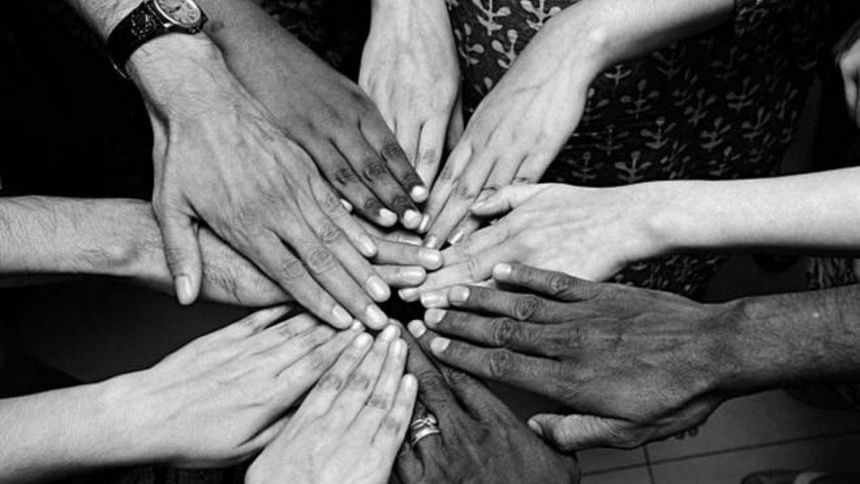Did colourism always exist in the Indian subcontinent?

When talking about discrimination, usually the topic that is widely discussed and studied is racism or the practice of discrimination of people based on race. In the Indian subcontinent what is more widely popularised as a major socio-cultural practice and has profound implications, yet less talked about and even less studied is the topic of colourism.
Colourism, says Wikipedia is "a form of prejudice or discrimination in which people are treated differently based on the social meanings attached to skin colour." This is very true in the case of the subcontinent and more often faced by women than men—which again requires a completely different study and would involve seeing things through the glasses of gender-based discrimination.
However, ideas like the fairer a woman is, the more "beautiful" she is or the more "marriageable" she is are two common examples of the practice of colourism. It would require writing another article to explain why colourism is in simple terms, bad and should be abolished as a practice. For this article, I am strictly adhering to the study of how colourism came to be in the Indian subcontinent.
So did colourism exist in ancient times in the Indian subcontinent? When and how was colourism introduced and initiated as a socio-cultural practice?
The Indian subcontinent has people with distinct features based on their geographical location. People up North generally have fairer skin and people down South generally have darker skin with a wide spectrum falling in the middle as we progress geographically from North to South. This difference can be attributed to the mixture of the immigrant Aryan population with the ancient tribes of the Indus valley civilisation up North and the Dravidian population flourishing down South. However, even with the existence of this difference in the skin colour of people, the idea of colourism did not exist and in fact, people of different skin colour were equally celebrated.
In the ancient texts of Mahabharata and the Vedas, there are both dark-skinned heroes and deities as are light skinned ones and are celebrated regardless of their skin colour. This goes to show that both dark and light skin colour were celebrated, and both considered beautiful in their own regard. Prejudice simply did not exist back then on the basis of colour.
There are recorded instances of the lighter skinned Aryan population fighting against their darker skinned subcontinental counterparts, which some historians have dictated to be events of prejudice based on colour. However, in reality, it was a fight to control territory, harness wealth, cultivate crops and graze cattle—basic cases of a population wanting to survive not a fight based on race or colour.
Things were good in the case of colourism back then but soon enter the long reign of Muslim invaders, predominantly the Mughals, the Portuguese and of course, the British. The Muslim rule of India consisted of several Muslim dynasties ruling over the Delhi Sultanate and later by the stronghold of the Mughal empire. During Mughal rule, Emperor Akbar was the first to make a thoughtful effort to unite the subcontinent. During the years of Muslim rule, there are no accounted instances of ruling based on the preconception of skin tone. However, the subcontinent did then come under the rule of Mughals, people of Persian and Arabic heritage having a fairer skin tone than the average person of the subcontinent. The system got formed of fairer skin people to rule over the subcontinent, but it was not institutionalised or politicised.
Finally, came the age of British colonial rule. This brings forward the first accounts of discrimination based on colour and the system of colour-based oppression becoming institutionalised. The British, who had fair skin, began preaching their idea of being superior and more intelligent as a race and hence meant to rule over inferior humans all of whom basically had darker skin colour. They built certain restaurants, clubs and institutions that prohibited entrance to dark-skinned individuals. During their rule, when it came to employment, they gave more preference to lighter skin individuals. They also provided them with more power and made alliances with them.
Public ridicule of darker skinned individuals and the institutionalisation of the idea that the lighter the skin more superior brought into the socio-cultural environment of the subcontinent, the basis of colourism. Hundreds of years of being ruled by lighter skinned individuals with the Muslim rule of India, other Europeans like the Portuguese and finally the British (with them institutionalising the idea), unknowingly or unwillingly, people began the association of fairer skin tone with greater social superiority. Even years after independence from the British, partition of India and independence of Bangladesh from Pakistan, the idea of colourism still remains deeply rooted systematically in our cultures throughout the subcontinent.
Muhammad Rakibul Islam is Global Ambassador, Clark University, USA.





Comments